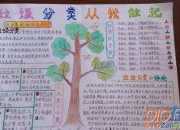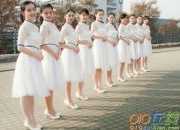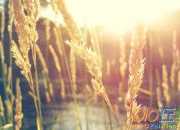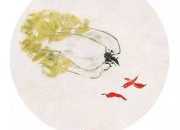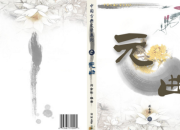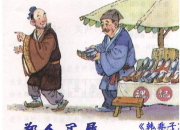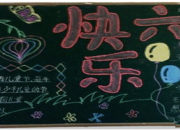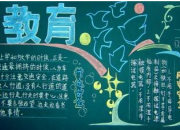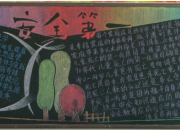英语必修3unit4课件
时间:2021-08-31英语必修3unit4课件
在进行英语必修3第四单元的教学时需要制定的相关额教学内容,下面是小编分享给大家的英语必修3unit4课件,希望对大家有帮助。
Ⅰ.教学内容分析
本单元的中心话题是“天文学”。本单元的两篇文章都采用了叙述性文体。第一篇阅读短文按照时间顺序主要叙述了地球上生命的起源和发展过程。第二篇阅读短文中作者用第一人称的口吻讲述了他和朋友的登月经历。可以说本单元科学知识含量较高,更能激发学生的学习兴趣和好奇心。
Warming Up 部分共有两个问题,第一个问题让学生说出八大行星并看图指出各个行星的名称;第二个问题让学生说出自己对天文学哪些方面感兴趣以及天文学家所关注的方面。在高考的重压之下,同学们都想能利用科学的学习方法做到事半功倍而且很多学生也一直做着将来能成为科学家的梦。所以,该话题会让学生们兴趣盎然,积极思考和讨论此方面的内容,从而达到热身的目的。
Pre-reading 部分也提出了三个问题,主要是让学生区分宗教信仰、文化传统和科学思想之间的不同。可以以讲故事的方式让学生彼此之间分享一些有关宇宙和地球起源方面的传说或故事,这样既能激活他们的思维也能为阅读部分打下基础。
Reading 部分描写了地球上生命的起源和发展过程,具体写了由于水的形成才使得地球上生命的诞生成为可能。科学家认为,地球上的生命最初诞生于水中。数万年后,陆地上才长出了绿色植物,随后出现了陆栖动物和水陆两栖动物。最初的动物靠孵化繁衍后代, 再之后诞生了哺乳动物,人类也随之诞生了。文章最后讲述的现象发人深省:The earth may become too hot for the lives on it.它关系到地球上生命的未来。
Comprehending 部分通过五个练习题检测学生对本文核心内容的理解。练习1是对文章结构的`分析以及大意的概括;练习2通过排序的方式帮助学生弄清本文的行文线索,也就是地球上生命的起源和发展历程;练习3提出5个小问题,考查学生的深层理解和推断能力;练习4让学生找出文章中出现的连接词,检查学生对文章中句型的熟悉和理解程度,同时还有助于学生在写作方面得到提高;练习5让学生选择一个问题进行回答并向全班汇报,开拓学生的思维并锻炼他们的语言表达能力。。
Learning about Language 有词汇和语法两部分。第一部分练习让学生学着去应用课文中出现的词语。第二部分是针对主语从句的练习,其中第一题要求学生从课文中找出三个或更多的主语从句;第二个练习以把主语从句改写成简单句的形式让学生能对此语法有深层的了解。第三个练习则以完成句子的方式要求学生更进一步的运用复合句,此部分是对表语从句进行练习。
Using Language包括“听力”、“阅读”、“说和写”三大块。这三部分的话题都是有关科学的。听力部分主要是介绍三位伟大的科学家。阅读部分讲了一个科幻故事。说和写的中心话题是登月旅行中必需的工具和可能遇到的问题。该部分的设计由浅入深,层层递进,既练习了听力又丰富了知识,还能够锻炼同学们的想象力,拓展学生各方面能力。
Summing Up 指导学生归纳和总结在本单元学到的知识——有用词汇、惯用表达和语法结构。
II.教学重点和难点
1.教学重点
(1)本单元的生词、短语和句型结构;
(2)掌握主语从句并把它和表语从句进行区别;
(3)学会运用科学知识并能结合自己的想象力去解决现实中的问题。
2.教学难点
(1)通过学习相应的科学知识培养学生的创造性思维能力;
(2)学生应能够理解主语从句的用法和作用并能做到学以致用,举一反三。
III.教学计划
本单元建议分为六课时:
第一课时:Warming Up, Talking (Workbook) & Listening(Workbook)
第二课时:Pre-reading, Reading & Comprehension
第三课时:Learning about Language
第四课时:Using Language
第五课时:Reading task & Speaking task (Workbook)
第六课时:Listening task & Writing task (Workbook)
IV. 教学步骤:
Period 1
Warming Up, Listening(Workbook)& Talking (Workbook)
Teaching Goals:
1. To arouse Ss’ interest in the knowledge of astronomy and science。.
2. To develop Ss’ ability in listening and speaking.
Teaching Procedures:
Step 1. Leading- in
Give Ss a few minutes to say something about science by asking the following questions.
(1.)Who is the first man in space,do you know?
(2.)Which spaceship did Yang Liwei take to space?
(3.)Do you want to go to space if you are given a chance?
Step 2. Warming Up
Purpose: To introduce the topic of this unit to Ss in the form of asking questions and discussion.
Ask some Ss the questions first and then get Ss to discuss with each other. If time permits, have one or two groups present their answers to the whole class.
(1) How many subjects are we studying now?
(2)Do you have some scientific studying methods to learn them well?
(3) As you see, a large number of students want to become scientists in the future. But what kind of qualities and skills do we need to be real scientists?
Step 3. Talking (Workbook)
1. Divide Ss into six groups, and ask them to talk about the request of Talking on P62 and answer the following questions. Different students will give different answers. Make notes of some valuable information and make a conclusion at last.
(1) What necessary instructions should new space travelers make?
(2) Can you make a list of them?
2. Show Ss some beautiful pictures of the university and say, “Now look at the pictures. How beautiful the Universe is! It is also full of mysteries. Have you ever dreamed of flying to the space like Yang Liwei to unlock the mysteries of the universe? If you could, what things should you pay attention to?”
3. Encourage Ss to give as much information as possible. After the discussion, write down some key words and important expressions on the blackboard to help Ss to have the sense of traveling in space .
